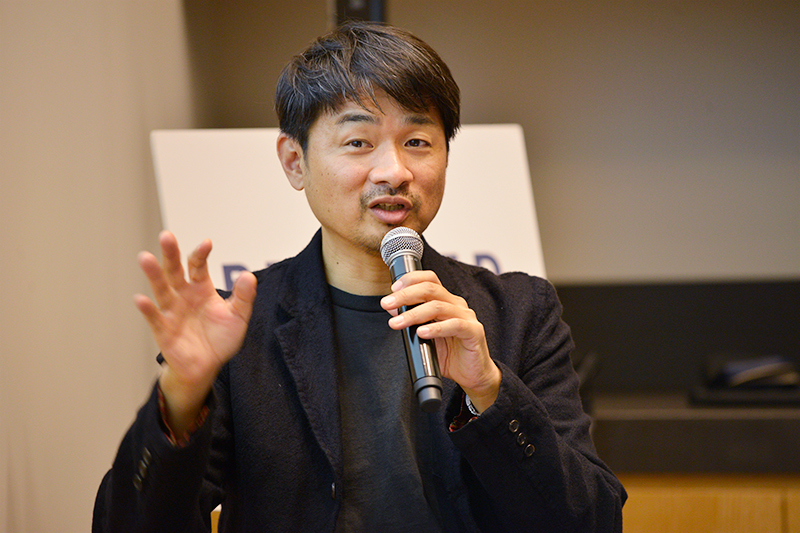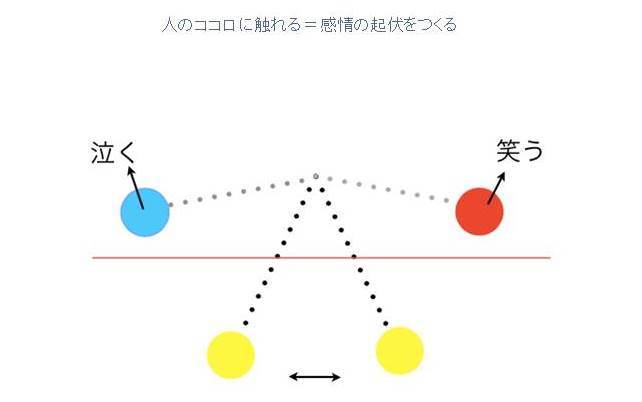Note: This website was automatically translated, so some terms or nuances may not be completely accurate.
What is Takuma Takasaki's Concept of the "Emotional Pendulum"? BRANDED SHORTS Seminar Report
Pacific Voice, the organizer of the international short film festival " Short Shorts Film Festival & Asia " (hereafter SSFF & ASIA), hosted a talk event titled " BRANDED SHORTS Seminar " at Andaz Tokyo in Toranomon on October 18th, featuring Takuma Takasaki, Executive Creative Director at Dentsu Inc. Takasaki discussed what advertising is, changes in devices, and what BRANDED SHORTS can achieve.
BRANDED SHORTS is an official category of SSFF & ASIA, referring to short films for branding that balance "value for consumers" with "messages from companies and brands." This year, Takasaki serves as a judge for BRANDED SHORTS.

There are clients called companies and clients called advertising.
Taking the stage, Mr. Takasaki began by exploring "what advertising is" using examples.
"There's an NHK program called 'Extracurricular Lesson: Welcome, Senpai,' where guests explain their jobs to children. Copywriter Takashi Nakahata appeared on it. First, he showed the kids a rotten tomato and told them, 'Praise this.' The children started answering things like 'It can be fertilizer' or 'It can be used for punishment games.' That definitely embodies an advertising perspective.
Next, Nakahata asked the children about their own shortcomings. They mentioned things like 'being shy around people' or 'having a soft voice'. He then guided them to turn those shortcomings into words of praise, just like with the rotten tomato. Not only was this an excellent explanation of advertising, but those words would surely become very important to them. I strongly felt that's how expression should be."
Regarding the nature of advertising, he stated: "If you create boring ads, people will perceive advertising itself as boring. When you think 'it's probably boring anyway' before looking, most things end up seeming dull. We have a responsibility to prevent that. I believe advertising production constantly carries two clients: the corporate client and the advertising client itself." He then added:
"Since BRANDED SHORTS is also a new tool, if we all create boring stuff, people will think 'BRANDED SHORTS is boring, right?' It must be recognized as an interesting tool that sells products." He stressed the need to nurture the BRANDED SHORTS tool.
Amidst intense media shifts, what should we strive to be?
Next, he shared his thoughts on media change.
"We are currently in the midst of intense media change. To create effective video content, you need to be sensitive to the environment and context in which that content is being viewed. And I think it's best to articulate that in your own words as much as possible. I have children in their third year of high school and third year of middle school. Even when we all watch TV together after dinner, within 15 minutes, I'm often the only one left watching. They start looking at their smartphones in their rooms.
When I ask what they're watching, it's often past videos of comedians they were laughing at on TV just moments ago. It's not that they've stopped watching TV; their relationship with video is changing. Take commercials: people don't care whether it's a web ad or a TV ad anymore. Where it aired is irrelevant. What matters is the connection between the creator and the content—the format itself has lost its significance. Perhaps creators need to adapt to this shift too."
Mr. Takasaki says that while the format no longer matters, there is an optimal way to create content for each device.
"But we're still in a transitional phase. I don't think TV commercials and web commercials have developed clear distinctions like movies and dramas have. Watching recent videos, I notice more close-ups and a tendency toward excessive explanation. This includes my own work. It might be influenced by creators increasingly checking their work on small monitors. The urge to convey what's interesting as quickly as possible might also be a product of video culture.
I was fortunate to film Robert De Niro once. There was a scene where he conversed with someone sitting in front and behind him in a movie theater. I naturally assumed De Niro would turn around to talk, but he didn't. He kept talking while only moving his eyes. De Niro, who's worked on the screen for so long, knows that small gestures can convey big things to the audience. Watching that gave me goosebumps."
Regarding the difference between TV commercials and web videos, including branded shorts, he said: "Web videos, even though statistically many people are watching them, somehow give you the feeling that you're the only one watching. In contrast, TV has a strong sense of simultaneity, so you feel that other people are watching too. I think that difference affects how the visuals are received."
Stories enrich the relationship between clients and people.
Regarding the category of BRANDED SHORTS, Mr. Takasaki felt it gave a name to what he had been trying to do and explained its potential.
"When I produced a web video just under 40 minutes long before, someone in the company opposed it, saying, 'No one will watch a 30-minute video on the web.' Hearing that really got me fired up (laughs), and I decided I would create a situation where people absolutely would watch it. So, I made a trailer and designed the communication to make people think it was a two-hour movie. First impressions are incredibly important. Once people thought it was a movie, their reaction shifted to 'Huh? 30 minutes? Nice and short!' or 'Huh? It's free?' I believe the effort to make something interesting is just as necessary as the effort to make it look interesting."
Next, regarding the emotional journey of viewers, he said: "Emotions are like a pendulum, always in motion. When the pendulum swings past a certain line, people laugh or cry. What's needed to cross that line is 'surprise.' There's surprise before laughter, and surprise before tears. In other words, predictability is the greatest enemy."

Finally, when asked by Kei Suwa, Chief Producer of the Short Shorts Executive Committee, about "the appeal of BRANDED SHORTS," Takasaki responded, "It's something that builds rich relationships."
"Corporate commercials are becoming increasingly straightforward. For example, they cram everything they want to say into a 6-second bumper ad. But while you can convey information in 6 seconds, you can't move emotions in 6 seconds. I don't think every company or product needs this BRANDED SHORTS format, but it seems well-suited for companies and products with the intention of enriching people. Story-driven visuals should be able to connect companies with people and create rich relationships. Moving forward, I want to create videos while keeping this in mind a little more strongly."
Was this article helpful?